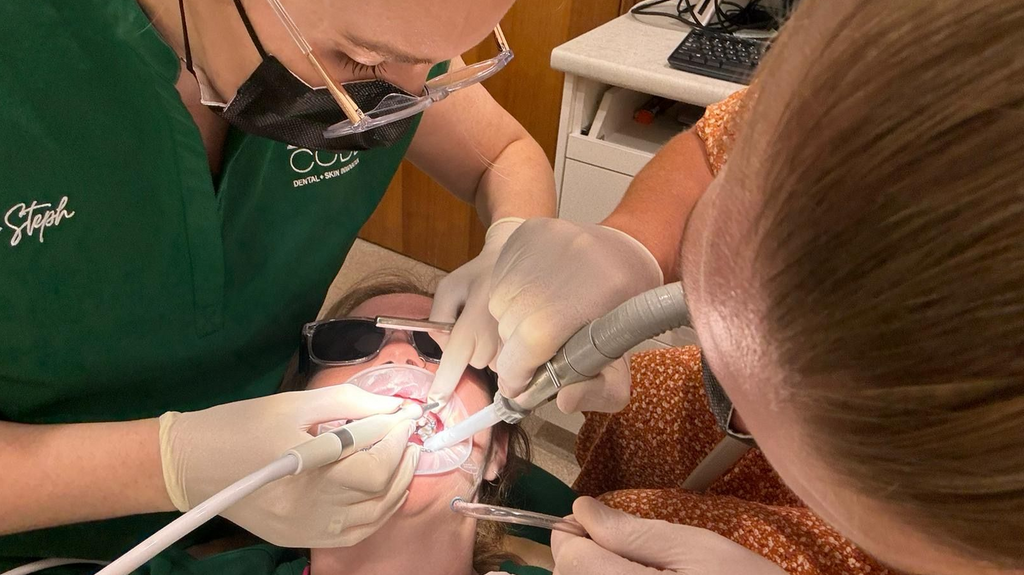Ever Heard the Saying 'Getting Long in the Tooth'?
You may have heard the saying “getting long in the tooth” when referring to ageing, but did you know it actually has roots in dental health? Gum recession, a common symptom of periodontal disease, is often what’s behind this phrase. Periodontal disease, or gum disease, is a serious condition affecting the gums and the structures around the teeth. Without proper care, it can lead to tooth loss and even impact overall health, but the good news is, with the right treatment, it can be kept in check.
What is Periodontal Disease?
Periodontal disease is an infection caused by bacteria that build up around and under the gumline. When plaque and tartar aren’t removed, these bacteria can lead to gum inflammation, causing the gums to swell, bleed, and eventually weaken the support around your teeth.
There are two stages of gum disease:
-
Gingivitis: This is the early stage, where gums are inflamed, red, and may bleed during brushing or flossing. With early treatment, gums can recover.
-
Periodontitis: At this advanced stage, the inflammation can lead to bone loss around the teeth, forming deep pockets that collect bacteria. Without care, periodontitis can damage the gums and bone, putting teeth at risk.
Can You Get Rid of Periodontal Disease?
Once periodontal disease reaches an advanced stage, it becomes a lifelong condition, but it’s manageable. Although it can’t be fully reversed, with proper treatment and maintenance, you can prevent it from progressing further. Stabilising periodontal disease is key to preserving oral health and keeping your gums and teeth in good shape.
How is Periodontal Disease Treated?
For those dealing with periodontitis, treatment focuses on thorough cleaning and regular follow-up to stop the disease in its tracks.
-
Scaling and Root Planing: This deep-cleaning procedure removes plaque and tartar below the gumline, helping your gums reattach to the teeth. It’s often done over a few visits for the best results and is essential for keeping periodontitis under control.
-
Surgical Intervention: For advanced cases, surgery might be necessary to clean deep pockets or regenerate lost bone. Surgery can help restore the gums and supporting tissues, setting a stable foundation for future health.
-
Ongoing Maintenance: Periodontal disease needs consistent monitoring, even after treatment. Regular dental visits every three to four months help keep the disease stable, and daily oral hygiene is crucial for keeping your gums healthy.
Can Periodontal Bacteria Be Shared?
Yes, it can! Research shows that the bacteria responsible for gum disease can spread from person to person through saliva. Close contact, like kissing, can transfer these bacteria, meaning gum health is essential not only for you but also for those around you.
If someone close to you has untreated gum disease, encouraging them to get treatment can benefit you both.

Take Control of Your Gum Health
Periodontal disease may sound intimidating, but with the right care, it’s entirely manageable. By getting treatment and following up with regular care, you can keep your gums healthy and stable, preserving your smile for years to come.
If you notice signs like gum redness, swelling, or recession, it’s best to reach out to your dentist. Early intervention can make all the difference in maintaining a healthy, happy mouth.




